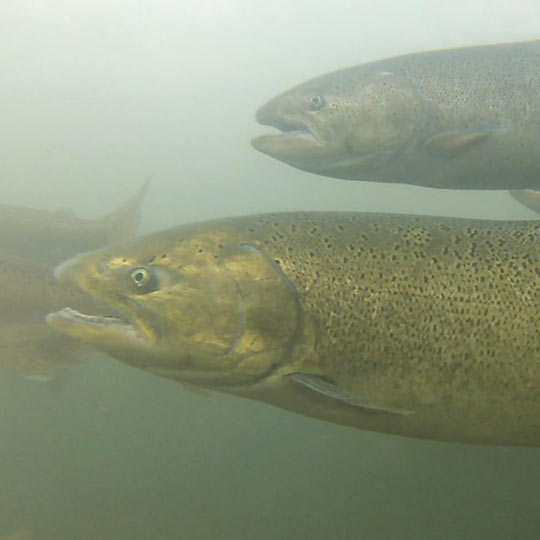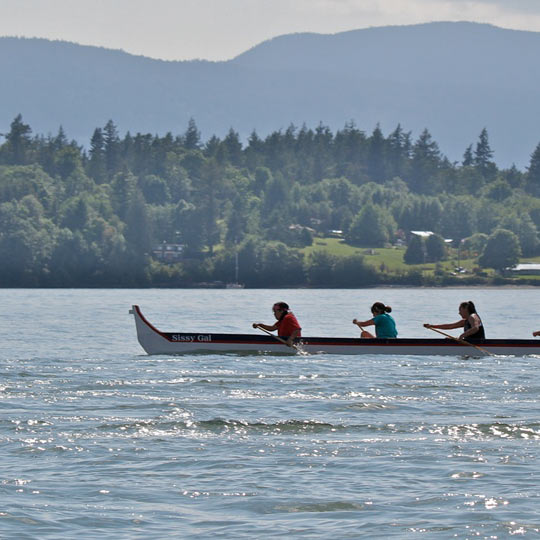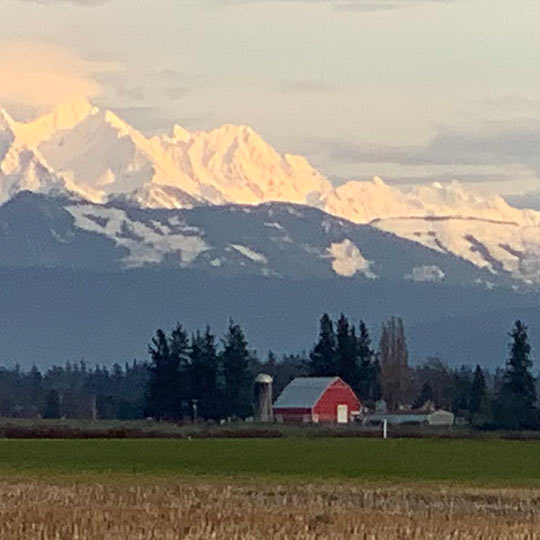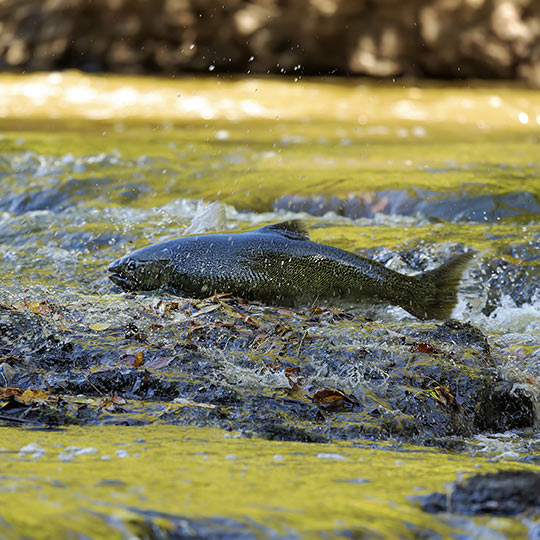History of Salmon and Water Protection
Timeline of Water Resources Protection Efforts in the Nooksack Basin
Today, low stream flows continue to impact salmon. While population growth and climate change increase urgency.
Protecting Nooksack River Stream Flows for Salmon: Water Rights Adjudication Offers Promise for Resolution after Decades of Collaborative Work Yield Little Benefit
TREVA COE, Habitat Program Manager, Nooksack Natural & Cultural Resources Department

Habitat Program Manager, Nooksack Natural & Cultural Resources Department
Water Law and Management in Washington
Fresh water is a limited resource, especially during summer. Western water law operates under the doctrine of prior appropriation, or “first-in-time, first-in-right”. This means that, in times of water shortage, senior (older) water rights are satisfied first and junior (newer) water right holders can be restricted. Each water right has a priority date, which is generally the date the water was first put to beneficial use. Water rights must generally be used continuously over an extended period of time or be subject to loss. Other parameters of a water right are the location of withdrawal and the purpose of the water being withdrawn from surface and groundwater.
Federal reserved water rights are those associated with public lands withdrawn from the public domain by the federal government, such as Indian reservations, military bases and national parks, forests and monuments. A federal reserved water right provides for sufficient water to fulfill the purpose of the land. Federal reserved water rights are not generally subject to state management.
Tribal water rights include:
- Treaty water rights are water rights associated with the rights reserved in the treaties. These are rights to sufficient stream flows to sustain a harvestable surplus of salmon to support treaty fishing rights. These water rights have a date of time immemorial and are therefore the most senior water rights in a given basin.
- Traditional on-reservation water rights are water rights associated with Indian reservations, usually to support agricultural production. Each has a priority date that is the date the reservation was established. These are sometimes called Winters water rights, named after the Winters v. US (1908) Court decision. In Winters the US Supreme Court ruled that when the United States sets aside land for an Indian reservation, it reserves water for actual and future use, with the date of the reservation being the priority date of the water right. These rights cannot be lost for nonuse.
Water Right Terms
- Claim: a claim to a water right that predates the water permitting system (prior to 1917 for surface water and prior to 1945 for groundwater); these rights can only be confirmed in an adjudication.
- Permit: an authorization to use a specific amount of water with a defined place, season, and purpose.
- Certificate: documentation of a “perfected” water right put to full beneficial use, recorded in the appropriate county, attached to a property deed.
- Adjudicated certificate: a certificate that has been validated by a local superior court in a water rights adjudication.
- Instream flow: specific flow levels established at a specific location in a given stream for the purposes of protecting stream flows. Priority date is the date of adoption of the instream flow rule, so new water right permits are conditioned to protect the instream flow levels.
- Groundwater permit exemption: The 1945 state Groundwater Code provided for certain small withdrawals to be exempt from the state’s water right permitting process. Exempt uses included domestic and industrial uses up to 5,000 gallons per day, irrigation of a lawn/garden half-acre or less in size, and stock watering. In 2020, Ecology updated the Nooksack instream flow rule to limit permit-exempt well domestic indoor use to 500 gallons per day for single homes and irrigation of up to 1/12 of an acre.
Source: WA Dept. of Ecology
About Us
Adjudication
Frequently Asked Questions
You Can Help. Join Our Email List.
We promise we won’t spam you.




